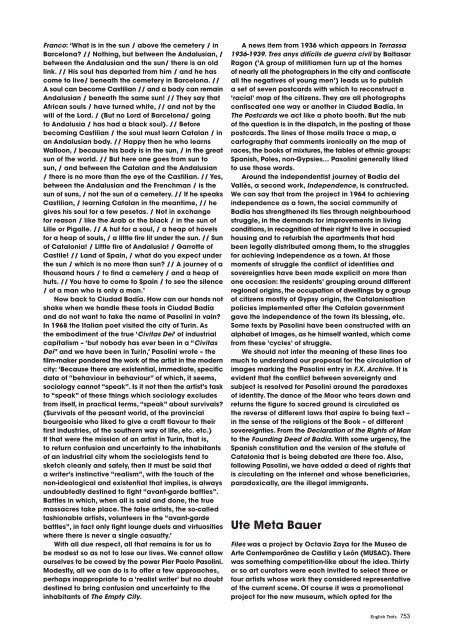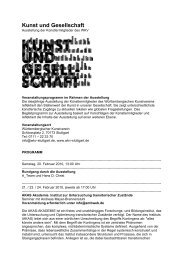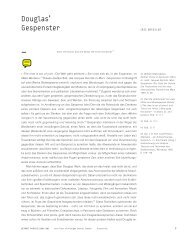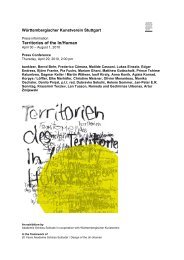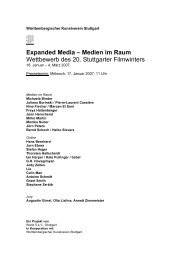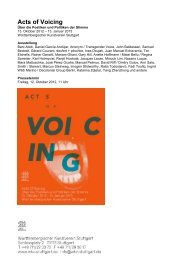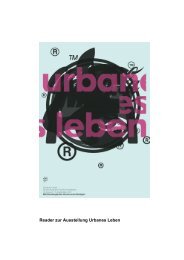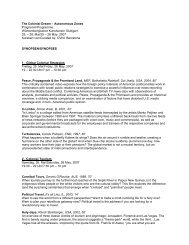English Texts
English Texts
English Texts
You also want an ePaper? Increase the reach of your titles
YUMPU automatically turns print PDFs into web optimized ePapers that Google loves.
Franco: ‘What is in the sun / above the cemetery / in<br />
Barcelona? // Nothing, but between the Andalusian, /<br />
between the Andalusian and the sun/ there is an old<br />
link. // His soul has departed from him / and he has<br />
come to live/ beneath the cemetery in Barcelona. //<br />
A soul can become Castilian // and a body can remain<br />
Andalusian / beneath the same sun! // They say that<br />
African souls / have turned white, // and not by the<br />
will of the Lord. / (But no Lord of Barcelona/ going<br />
to Andalusia / has had a black soul). // Before<br />
becoming Castilian / the soul must learn Catalan / in<br />
an Andalusian body. // Happy then he who learns<br />
Walloon, / because his body is in the sun, / in the great<br />
sun of the world. // But here one goes from sun to<br />
sun, / and between the Catalan and the Andalusian<br />
/ there is no more than the eye of the Castilian. // Yes,<br />
between the Andalusian and the Frenchman / is the<br />
sun of suns, / not the sun of a cemetery. // If he speaks<br />
Castilian, / learning Catalan in the meantime, // he<br />
gives his soul for a few pesetas. / Not in exchange<br />
for reason / like the Arab or the black / in the sun of<br />
Lille or Pigalle. // A hut for a soul, / a heap of hovels<br />
for a heap of souls, / a little fire lit under the sun. // Sun<br />
of Catalonia! / Little fire of Andalusia! / Garrotte of<br />
Castile! // Land of Spain, / what do you expect under<br />
the sun / which is no more than sun? // A journey of a<br />
thousand hours / to find a cemetery / and a heap of<br />
huts. // You have to come to Spain / to see the silence<br />
/ of a man who is only a man.’<br />
Now back to Ciudad Badía. How can our hands not<br />
shake when we handle these tools in Ciudad Badía<br />
and do not want to take the name of Pasolini in vain?<br />
In 1968 the Italian poet visited the city of Turin. As<br />
the embodiment of the true ‘Civitas Dei’ of industrial<br />
capitalism – ‘but nobody has ever been in a “Civitas<br />
Dei” and we have been in Turin,’ Pasolini wrote – the<br />
film-maker pondered the work of the artist in the modern<br />
city: ‘Because there are existential, immediate, specific<br />
data of “behaviour in behaviour” of which, it seems,<br />
sociology cannot “speak”. Is it not then the artist’s task<br />
to “speak” of these things which sociology excludes<br />
from itself, in practical terms, “speak” about survivals?<br />
(Survivals of the peasant world, of the provincial<br />
bourgeoisie who liked to give a craft flavour to their<br />
first industries, of the southern way of life, etc. etc.)<br />
If that were the mission of an artist in Turin, that is,<br />
to return confusion and uncertainty to the inhabitants<br />
of an industrial city whom the sociologists tend to<br />
sketch cleanly and safely, then it must be said that<br />
a writer’s instinctive “realism”, with the touch of the<br />
non-ideological and existential that implies, is always<br />
undoubtedly destined to fight “avant-garde battles”.<br />
Battles in which, when all is said and done, the true<br />
massacres take place. The false artists, the so-called<br />
fashionable artists, volunteers in the “avant-garde<br />
battles”, in fact only fight lounge duels and virtuosities<br />
where there is never a single casualty.’<br />
With all due respect, all that remains is for us to<br />
be modest so as not to lose our lives. We cannot allow<br />
ourselves to be cowed by the power Pier Paolo Pasolini.<br />
Modestly, all we can do is to offer a few approaches,<br />
perhaps inappropriate to a ‘realist writer’ but no doubt<br />
destined to bring confusion and uncertainty to the<br />
inhabitants of The Empty City.<br />
A news item from 1936 which appears in Terrassa<br />
1936-1939. Tres anys difícils de guerra civil by Baltasar<br />
Ragon (‘A group of militiamen turn up at the homes<br />
of nearly all the photographers in the city and confiscate<br />
all the negatives of young men’) leads us to publish<br />
a set of seven postcards with which to reconstruct a<br />
‘racial’ map of the citizens. They are all photographs<br />
confiscated one way or another in Ciudad Badía. In<br />
The Postcards we act like a photo booth. But the nub<br />
of the question is in the dispatch, in the posting of those<br />
postcards. The lines of those mails trace a map, a<br />
cartography that comments ironically on the map of<br />
races, the books of mixtures, the tables of ethnic groups:<br />
Spanish, Poles, non-Gypsies… Pasolini generally liked<br />
to use those words.<br />
Around the independentist journey of Badia del<br />
Vallès, a second work, Independence, is constructed.<br />
We can say that from the project in 1964 to achieving<br />
independence as a town, the social community of<br />
Badia has strengthened its ties through neighbourhood<br />
struggle, in the demands for improvements in living<br />
conditions, in recognition of their right to live in occupied<br />
housing and to refurbish the apartments that had<br />
been legally distributed among them, to the struggles<br />
for achieving independence as a town. At those<br />
moments of struggle the conflict of identities and<br />
sovereignties have been made explicit on more than<br />
one occasion: the residents’ grouping around different<br />
regional origins, the occupation of dwellings by a group<br />
of citizens mostly of Gypsy origin, the Catalanisation<br />
policies implemented after the Catalan government<br />
gave the independence of the town its blessing, etc.<br />
Some texts by Pasolini have been constructed with an<br />
alphabet of images, as he himself wanted, which come<br />
from these ‘cycles’ of struggle.<br />
We should not infer the meaning of these lines too<br />
much to understand our proposal for the circulation of<br />
images marking the Pasolini entry in F.X. Archive. It is<br />
evident that the conflict between sovereignty and<br />
subject is resolved for Pasolini around the paradoxes<br />
of identity. The dance of the Moor who tears down and<br />
returns the figure to sacred ground is circulated as<br />
the reverse of different laws that aspire to being text –<br />
in the sense of the religions of the Book – of different<br />
sovereignties. From the Declaration of the Rights of Man<br />
to the Founding Deed of Badia. With some urgency, the<br />
Spanish constitution and the version of the statute of<br />
Catalonia that is being debated are there too. Also,<br />
following Pasolini, we have added a deed of rights that<br />
is circulating on the internet and whose beneficiaries,<br />
paradoxically, are the illegal immigrants.<br />
Ute Meta Bauer<br />
Files was a project by Octavio Zaya for the Museo de<br />
Arte Contemporáneo de Castilla y León (MUSAC). There<br />
was something competition-like about the idea. Thirty<br />
or so art curators were each invited to select three or<br />
four artists whose work they considered representative<br />
of the current scene. Of course it was a promotional<br />
project for the new museum, which opted for the<br />
<strong>English</strong> <strong>Texts</strong> 753


